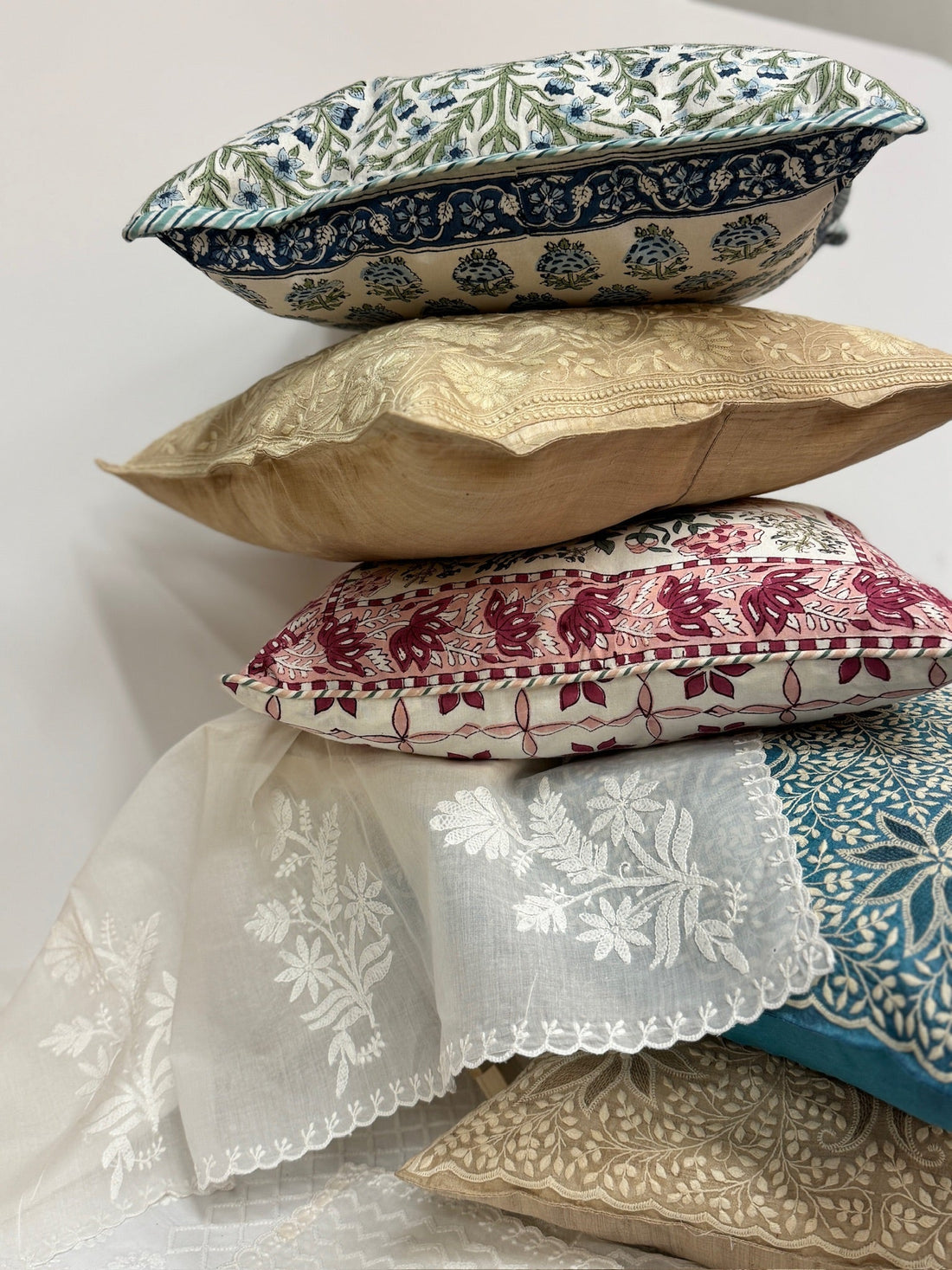Handmade Home Decor: The Beauty of Slow Craft and Artisan Work
Suvrita Kothari
Share
We live in a world where everything is faster, easier, and often...disposable. You can order an embroidered cushion online in seconds, and it will arrive at your doorstep the next day. But speed comes at a cost, and in our rush for convenience, we often lose the very soul of what we own.
The difference between handmade and machine-made is not only in how it looks but in what it carries. It is about patience, skill, and culture. It is about the hours, sometimes days, of focused labour and the people whose hands make it all possible.
Take block printing, for example. It might seem like a repetitive, almost mechanical task. But in truth, it is a process that demands precision and patience. It begins with selecting the cloth and preparing it so it is perfectly clean and taut. Then comes the carving of wooden blocks from seasoned woods like teak or sheesham (rosewood), each motif cut by hand with chisels and gouges, often taking days to complete. These blocks are treated with mustard oil and rested so they do not crack, ready to be used for years. The fabric is printed one stamp at a time, each placement aligned perfectly with the next to form a continuous pattern. Dyes are carefully prepared, applied to the block, and pressed into the cloth, sometimes dusted with fine sawdust to keep the print crisp. Once the pattern is complete, the fabric is dried under the sun, washed thoroughly to fix the colours, and ironed. Only then is it ready to be transformed into finished products.
By contrast, chikankari embroidery moves at an almost meditative pace. It begins with a design carefully transferred onto the fabric using carved wooden blocks dipped in a washable pigment. Then the embroidery starts, a meticulous interplay of over 30 different stitches, from delicate shadow work and airy jaali (net-like embroidery) to fine knots and running stitches. Each stitch is sewn by hand, the fabric stretched in an embroidery frame so every thread lies perfectly in place. Even a small piece can take several days to finish, while larger or more intricate items may require weeks. And when you replace that kind of work with the speed of a machine, you lose more than just time. You lose the depth and durability of true handwork, the texture and warmth that make a piece feel alive, and the quiet heritage carried in every stitch, stories and skills passed from one pair of hands to the next, for generations.
There is something irreplaceable about owning a piece that exists in only a few numbers in the world. It feels deeply personal, like it was made just for you. Handmade home décor is not about filling a space for the sake of it; it is about creating a connection. These are pieces that become heirlooms, the kind that carry stories, much like the quilt your grandmother might have stitched for you when you were born. Every thread holds sentiment, and no machine-made object can replicate that feeling.
Choosing handmade is also an act of intention. It is a decision to live with fewer, better things, to support craftspeople and local economies, and to reduce waste. Handmade production often uses less energy, and when a piece stays with you for decades, it stays out of landfills. Did you know a single hand-embroidered cushion can take more than thirty hours to make, each stitch carrying generations of skill? The difference is tangible. Handmade has a natural softness and weight, with tiny variations that tell you a human hand was there, while machine-made pieces are perfectly uniform, flawless to the point of feeling flat, often without the depth or texture that draws you in.
When I studied textile design at Central Saint Martins in London, specialising in weaving, I began to understand just how much labour goes into making fabric. Weeks of work can go into something we use every day, yet we often discard it after a single use. Weaving taught me patience, but it also opened my eyes to something I had never truly considered before. Coming from India, I never stopped to think about the artisans who do this for a living, often working from their homes for barely enough to survive. I remember visiting a district in Telangana and seeing their poor living conditions. It was humbling and unsettling. There I was in London, being paid to design fabrics, while they worked tirelessly for almost nothing.
That experience has stayed with me. It is why I run my studio the way I do, not only to create beautiful products but to honour the people whose hands keep our traditions alive. Handmade is not just about the object itself. It is about time, touch and the choice to live with things that carry meaning. Every time you choose handmade, you keep a story alive, and one day, that story might be passed down like a quilt, a cushion or a tablecloth, carrying with it a little piece of history, of you.
By Suvrita Kothari
